Barrel Aging: The Alchemy of Oak and Cherrywood
Transforming raw, clear whisky into a rich, complex spirit isn’t just about time—it’s a careful dance between spirit and wood, an alchemical process that brings flavour and character to life. Here’s a look at the journey from barrel to bottle.
1. The Allure of Oak and Cherrywood
Why oak? Simple—it’s packed with compounds that shape whisky’s depth and soul:
- Lignin releases vanillin, adding that hint of vanilla we know and love.
- Hemicellulose caramelizes during charring, bringing sweetness.
- Tannins lend astringency and structure. Plus, oak’s dense grain prevents leaks, letting the whisky breathe slowly and take on the wood’s essence.
Cherrywood isn’t as common, but it’s got a unique charm:
- Lignin in cherrywood also breaks down to release vanillin, but here it’s subtle, with a floral twist.
- Syringaldehyde is a cherrywood exclusive, adding smoky, fruity notes—think dark cherries or berries.
- Lower in tannins than oak, cherrywood highlights the spirit’s natural flavours and keeps things smooth.
With a softer grain, cherrywood brings quicker flavour extraction, perfect for shorter aging periods or adding that fruity edge.
2. Charring and Toasting: The Fire and Sweetness
Before the spirit meets the wood, barrels are charred or toasted. Charring creates activated carbon that filters out unwanted flavours, while toasting caramelizes the sugars within the wood, deepening the whisky’s sweetness and complexity.
3. The Chemical Symphony
Aging whisky isn’t just waiting around; it’s a complex series of reactions:
- Extraction: Ethanol dissolves flavour compounds like vanillin, eugenol (spice), and lactones (coconut).
- Oxidation: Oxygen seeps in, mellowing harsh notes and creating new flavour molecules.
- Esterification: Alcohols and acids react to form esters, bringing fruity and floral aromas.
4. The Push and Pull: Temperature and Barrel Breathing
As temperatures change, whisky expands and contracts, pushing into the wood and pulling back, soaking up those deep, complex wood flavours.
- Warm days: Increase flavour extraction.
- Cool nights: Allow the spirit to absorb what it’s taken in.
Local climate, humidity, and temperature all play a role, giving each batch its own personality.
5. Time: The Patient Art of Maturation
Time is essential to let flavours settle and develop, but too much of it can make whisky overly bitter as tannins take over. It’s all about striking that perfect balance.
6. Colour: The Mark of Maturity
A whisky’s amber or golden hue comes from:
- Tannins and wood pigments.
- Caramelized sugars from toasting.
- Oxidation creating new colour compounds.
Rapid Aging: A Shortcut to Complexity
While true “Canadian Whisky” must age in a barrel for three years, there’s a way to fast-track the process in smaller volumes, replicating the seasonal shifts that bring out complex flavours.
1. Adding a Wood Stave
Place a small piece of charred wood (a stave) into the spirit, seal it, and give it a good shake to ensure contact with the wood.
2. Sunlight Exposure
Set the jar on a sunny windowsill for a week. The heat expands the wood, letting the spirit penetrate and extract flavours.
3. Cold Contraction
Move the jar to the freezer for 2-3 days. The cold contracts the wood, releasing the absorbed spirit back into the jar. Alcohol won’t freeze, so the flavours remain intact.
By repeating these cycles, you can mimic the natural aging process, quickly layering in rich flavours.
By understanding these steps, you’ll appreciate the transformation of raw spirit into mature whisky—a true blend of art, science, and a bit of magic.

